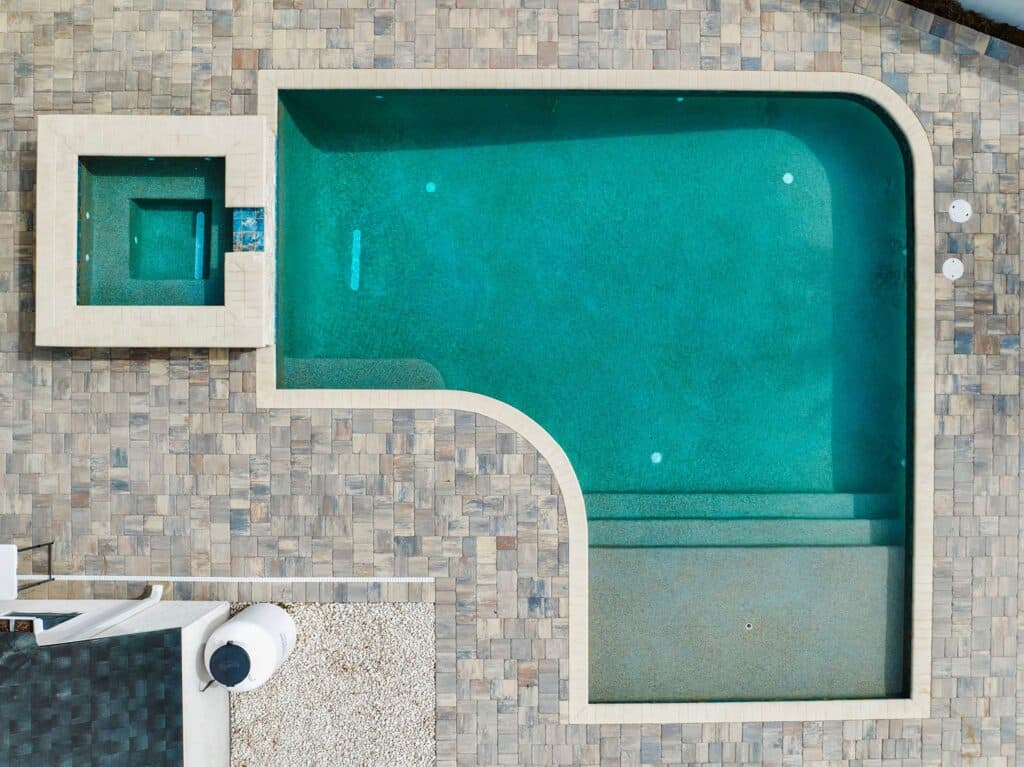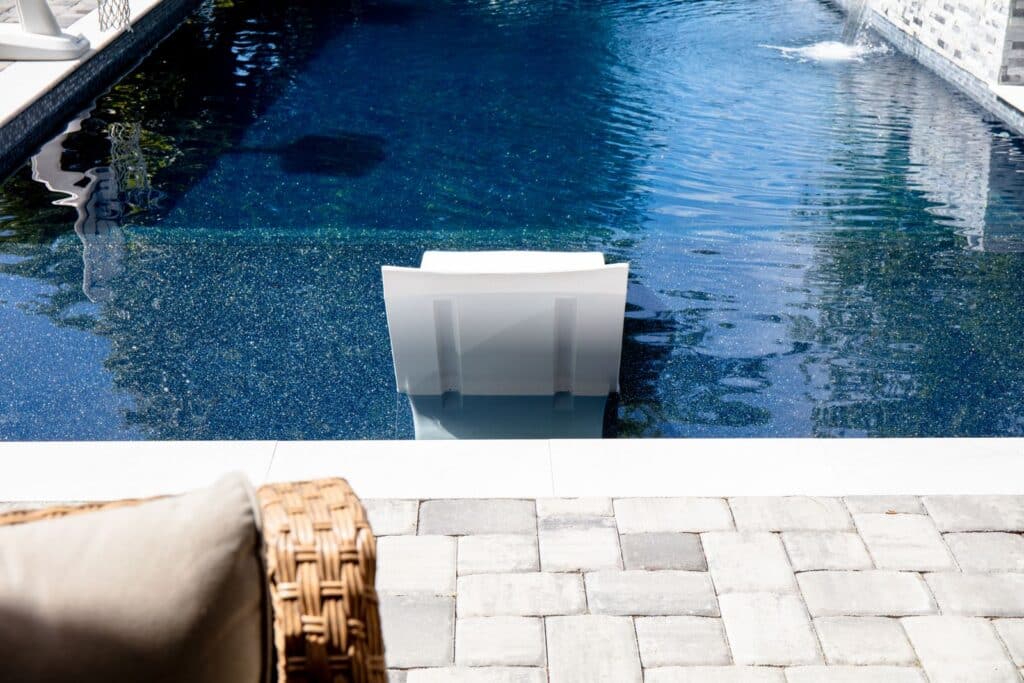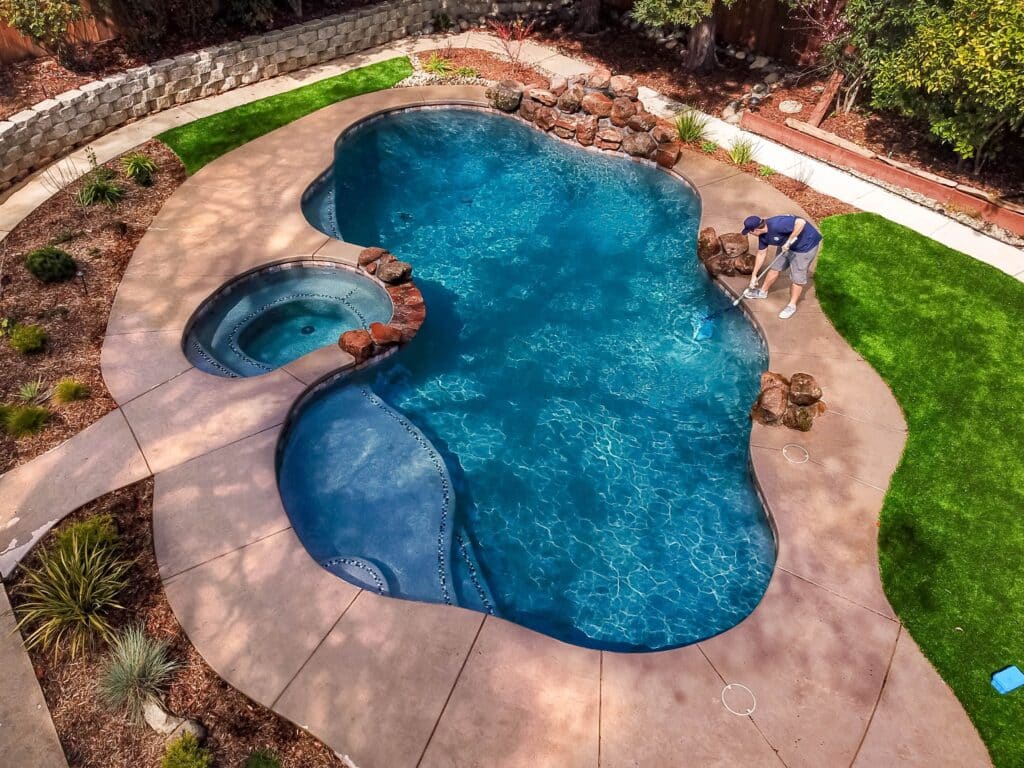When selecting a filter for an inground pool, there are three primary types: sand, diatomaceous earth (DE), and cartridge. Each option has advantages and disadvantages to consider when making the final decision. For example, sand filters often provide more cost–savings but may require more frequent backwashing than higher-priced DE or cartridge models. In contrast, DE filtration systems usually have lower maintenance needs but result in higher operating costs than sand models.
Ultimately, which type best suits your particular arrangement depends on budget restraints and location-specific factors – like how much time you can feasibly devote to cleaning and upkeep each season.
What Exactly Does A Pool Filter Do?
Before discussing the different types of filters, we should first understand why these are such indispensable components to any pool. A filter is a device installed within the plumbing system and serves as a net for any dirt and debris carried in with the water.
As it flows through this “net,” all caught impurities get withheld so only clean water goes back into the pool – creating a cyclical process maintained by turning on or off the filter system (which often runs anywhere between 6-12 hours per day).
Pool Sand Filter Explained
The sand filter has been around for a long time and remains one of the most cost-effective pool filtration systems. Many older pools feature this technology – involving a tank that contains, depending on the size, specific volumes of specialized sand crafted for filtration use. Water fills the tank from above and slowly moves through it at 75% sand content with 25% free space, in the process, filtering out all microns big enough to remain trapped in the granules below.
All dirt and debris collected are only released through backwashing – a method by which water flow is reversed from bottom to top with fresh water, pushing out any particles captured during filtration before being redirected into the swimming area, where it awaits further treatment, if necessary. A complete cleaning must occur every 3-5 years. Otherwise, rounder grains may overtake said media filling, leading to decreased efficiency, as the rounded elements fail to trap items between them.
The DE Pool Filter Explained
When it comes to filtering the water in a pool, there is an alternative option other than sand filters. That alternative is known as a Diatomaceous Earth (DE) filter, which works on much finer particles and provides greater water clarity, making it safer for swimming. This filter utilizes grids or ‘fingers’ coated with DE powder from crushed sea shells and microscopic creatures like diatoms. This powder catches smaller particles of dirt and debris than a traditional sand filter.
One consideration with this filter includes the loss of DE powder due to backwashing, which will need to be added back into the filter after cleaning. This powder has to be handled carefully due to its ultra-fine consistency being potentially dangerous if melted into a liquid form or breathed in. It’s so hazardous that OSHA even classified it as such in New Jersey!
Moreover, each year, these filters require maintenance and disassembly to have their fingers cleaned with a degreaser before eventual reassembly – something which takes longer than other types of filters available on the market today. Although they cost slightly more initially, when purchasing one for your home pool or business venture, EU regulators claim that they should provide better results overall. However, users should remember all potential warnings to operate them safely.
The Pool Cartridge Filter Explained
For pool owners looking to make their inground pools as low-maintenance as possible, cartridge filters achieve this goal. Manufactured with spun polyester, pleated and wrapped around a heavy plastic or PVC core, and all secured together by rubber. They come in three sizes (small, medium, and large) and multiple varieties, such as single-element and multi-element cartridge types that commonly hold two to four cartridges, making it easier for anyone to find the perfect fit for their specific pool dimensions. They also have a higher surface area on average and are easier to install. For optimal performance on smaller filters, replace them yearly, while larger filters have a general longevity of four to eight years between replacements.
Another perk: Cartridge filters run with less fuss since they operate without an accompanying separation tank or need for backwashing due to their DE media system, compared to traditional sand filters, which require regular inspections upon installation. Routine cleaning is still necessary to ensure the water stays clear of floating debris, but maintenance, including changing the elements, only takes an hour and happens every couple of months. So your lazy days outdoors can continue uninterrupted!
Which Type of Pool Filter Is Recommended?
When it comes to pool filtration, sand filters are among the most common choices for many reasons. Generally speaking, they are easy to maintain and provide years of effective service in keeping your pool clean. Additionally, these systems are the least expensive option; many even come as part of basic packages offered by swimming pool companies.
DE filters may also be a viable alternative that can quickly control large amounts of debris and contaminants but require much higher maintenance levels – potentially making them less appealing than sand systems when considering other factors like cost and convenience.
For greater efficiency, while still keeping costs realistic and regular maintenance requirements low, premium builders suggest installing a cartridge filter which can help improve ease of use across the board with little or no extra charge (depending on the company). All reputable firms should let you decide what’s best for you based on your budget and performance expectations, but in some cases, cartridges come standard at no additional cost!




